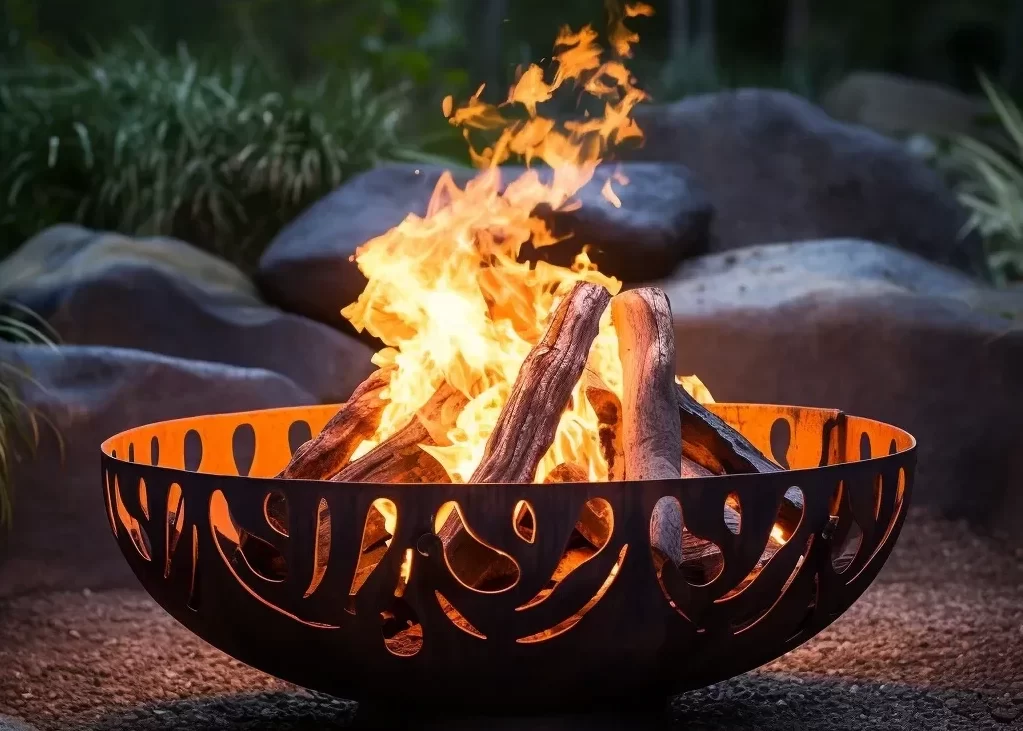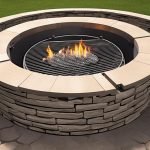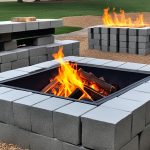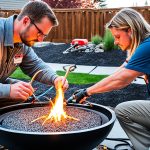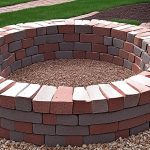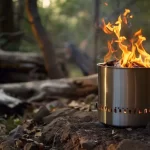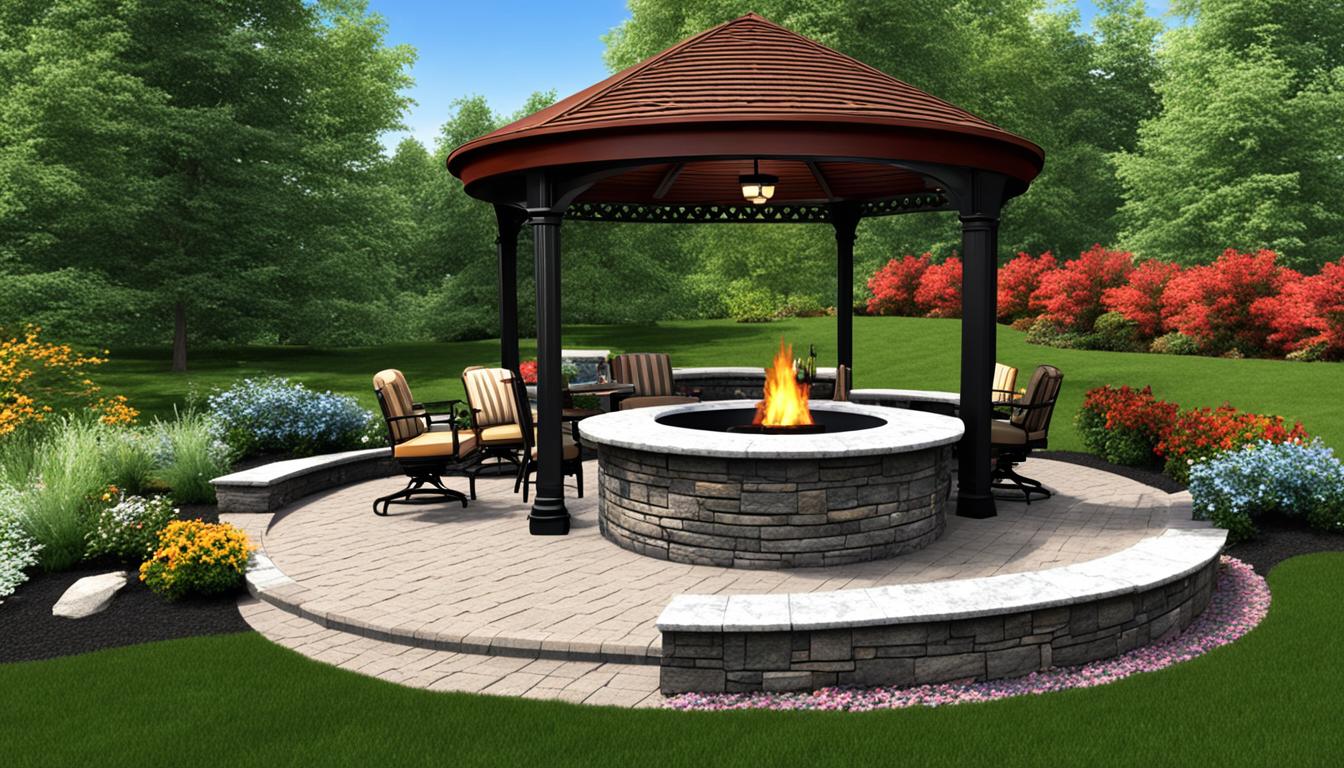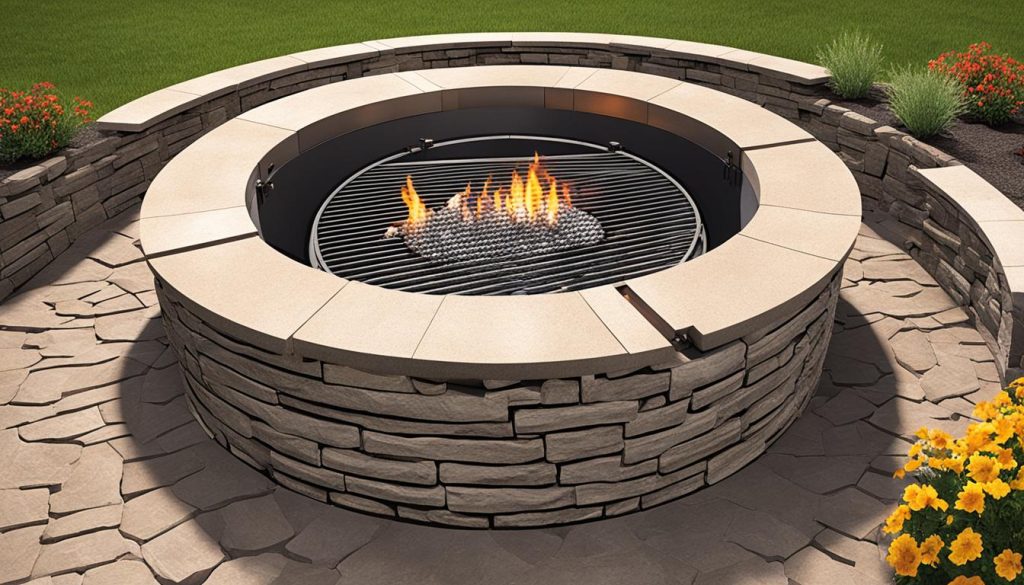
Are you looking to enhance your outdoor space with a unique and stunning focal point? Imagine the warm glow of a fire pit emanating from your backyard, creating a cozy ambiance for gatherings with friends and loved ones. But have you ever considered building an underground fire pit?
Building an underground fire pit is a captivating idea that raises questions. How can an underground fire pit be safe and properly installed? What are the necessary steps to create a functional and visually appealing backyard fire feature? Discover everything you need to know about underground fire pit installation and get ready to embark on a remarkable DIY project.
Key Takeaways:
- Learn how to safely and successfully install an underground fire pit in your backyard.
- Discover tips for selecting the right location and gathering the necessary materials.
- Understand the importance of proper drainage and digging techniques.
- Explore step-by-step instructions for building the fire pit and accompanying paver patio.
- Uncover innovative ideas for designing a unique and visually striking fire pit.
Gathering Materials and Tools
Before you start building your underground fire pit, it’s important to gather all the necessary materials and tools. Whether you choose to purchase a fire pit kit or gather materials to build one from scratch, having everything ready will streamline the construction process. The materials you’ll need for the fire pit will depend on the size and design you choose, so be sure to plan accordingly. Additionally, if you’re considering adding a paver patio around the fire pit, you’ll need to gather the necessary materials for that as well.
For the fire pit itself, you’ll need fire-resistant bricks or blocks, such as concrete or fire-rated materials. These materials will ensure the safety and longevity of your fire pit. You may also need gravel or sand for the base of the fire pit to improve drainage and stability. If you decide to build a paver patio, gather the appropriate materials such as pavers, gravel base, and sand.
To construct your fire pit, you’ll need tools such as a shovel for digging, a level for ensuring proper alignment, and a measuring tape for accurate dimensions. It’s also useful to have a mallet or rubber mallet for adjusting the position of the bricks or blocks. Depending on the complexity of your design, you may need additional tools such as a saw for cutting blocks or bricks to fit specific areas.
Consider purchasing a fire pit kit, which typically includes all the required materials and instructions. This can simplify the process and ensure that you have everything you need. However, if you prefer a customized design, gather the materials individually based on your preferred style and size.
Remember to calculate the quantity of materials needed based on the square footage of your desired fire pit and paver patio area. Having all the necessary materials and tools ready will make the construction process smoother and more efficient, allowing you to enjoy your underground fire pit and paver patio in no time.
Image:
Building an underground fire pit requires gathering the right materials and tools. Whether you opt for a fire pit kit or decide to construct one from scratch, it’s important to have all the necessary components on hand. Additionally, if you plan on adding a paver patio around the fire pit, make sure to gather the appropriate materials for that as well. By being prepared and calculating the required quantities, you’ll ensure a successful and enjoyable project.
Laying Out the Location
Choosing the right location for your underground fire pit is crucial for both safety and aesthetics.
When selecting a location in your backyard, ensure that it is level and offers a good view. Consider the overall layout and flow of your outdoor space. You want the fire pit to be a focal point that seamlessly integrates with the rest of your landscaping.
It is essential to place the fire pit at least 15 feet away from any shrubs, trees, or buildings to prevent any potential fire hazards. This distance will provide a safe buffer zone and help protect the surrounding vegetation and structures.
Once you have identified the perfect location, it’s time to mark out the fire pit area. Start by measuring and marking the center point where the fire pit will be situated. Use a tape measure or yardstick to ensure precision.
Next, grab a length of string or twine and tie one end to the stake placed at the center point. Stretch the string out to the desired radius of the fire pit. This will be the first circle you mark. Anchor the string in place with another stake.
If you plan on building a paver patio around the fire pit, repeat the same process to mark the perimeter of the patio area. This will be the second circle you mark.
By clearly marking the circles, you’ll have a visual representation of the fire pit’s dimensions and the surrounding patio space, making it easier to proceed with the next steps in the construction process.
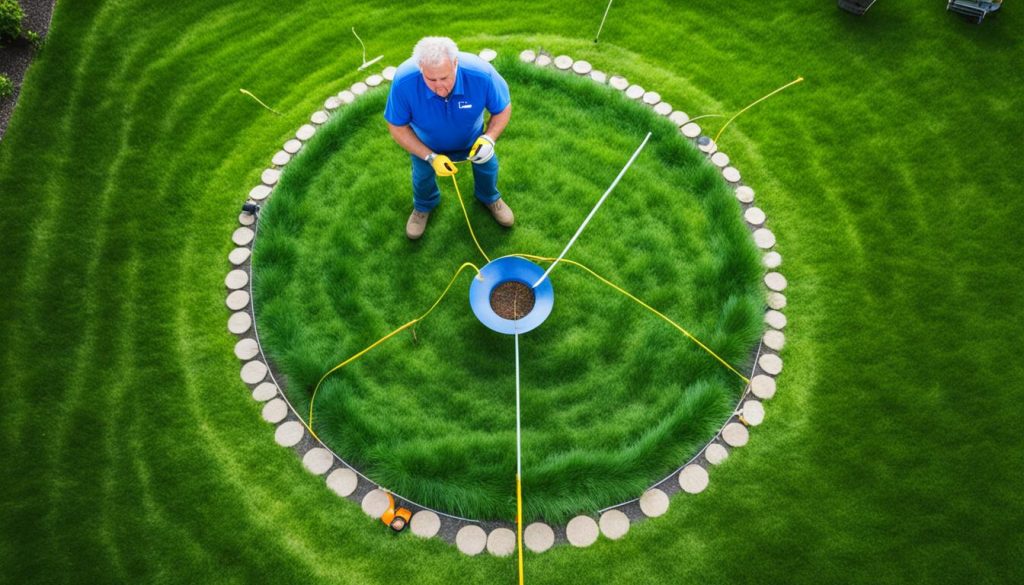
Choosing Fire Pit Location
“The location you choose for your fire pit will greatly impact the ambiance and functionality of your outdoor space. Take your time and consider various factors, such as the view, wind direction, and accessibility.”
Measuring Fire Pit Area
“Accurate measurements are crucial to ensure proper spacing and placement of the fire pit and any additional features such as a paver patio. This will contribute to the overall aesthetics and functionality of your outdoor area.”
Marking Fire Pit Circles
“Marking out the fire pit circles will provide you with a clear visual guide, allowing you to proceed with confidence during the construction process. It ensures accuracy and helps maintain proportional balance within your backyard design.”
Digging the Fire Pit Hole
Now it’s time to dig the hole for your underground fire pit. The depth of the hole will depend on personal preference, but a depth of 18 inches is commonly recommended. Make sure to have a wheelbarrow or tarp nearby to hold the excavated soil. Be mindful of the angle of the pavers as you dig the second circle for the paver patio area, and consider using a sod cutter if there is grass in the designated area. It’s also important to address proper drainage to prevent water accumulation and potential issues. There are different drainage techniques depending on the soil type and precipitation levels.
When digging the fire pit hole, start by marking the center of the pit using the stake and string. Then, using a shovel or a spade, start digging the hole. Measure the depth as you go to ensure it reaches the desired 18 inches. Remember to wear protective gloves and eyewear while digging to ensure your safety.
Proper drainage is crucial for the longevity and functionality of your fire pit. Without proper drainage, water can accumulate and cause damage to the pit. There are various drainage options you can consider, depending on your soil type and precipitation levels. One option is to add a layer of gravel at the bottom of the hole to help with drainage. Another option is to create a small drainage trench around the perimeter of the pit to redirect excess water. It’s important to choose the drainage option that works best for your specific situation.
Once you’ve finished digging the fire pit hole and addressing the drainage options, you’re ready to move on to the next step: building the fire pit and paver patio. But first, let’s take a look at the materials and tools you’ll need for this process.
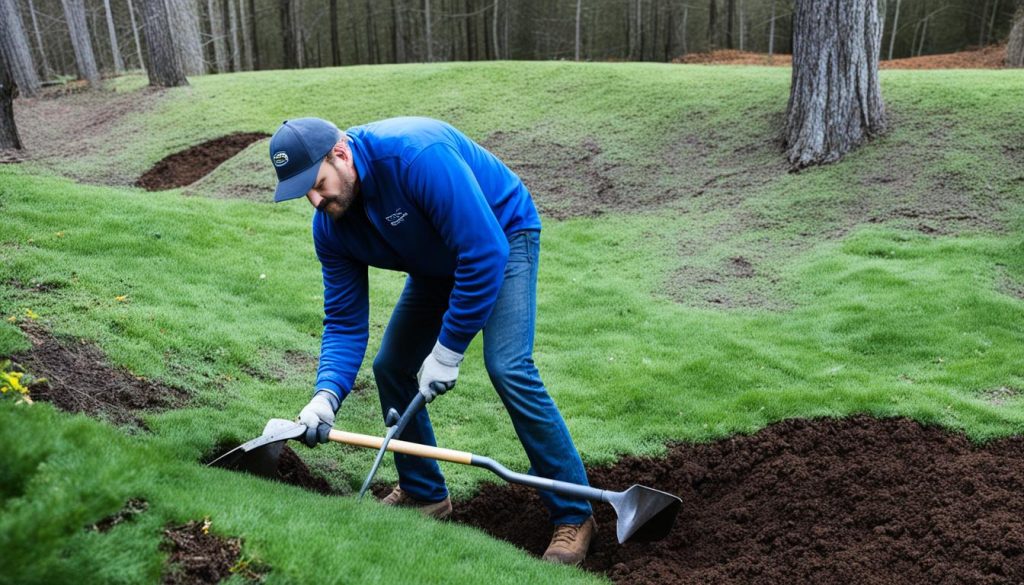
Building the Fire Pit and Paver Patio
Once you’ve completed the excavation and addressed proper drainage for your underground fire pit, it’s time to start building the fire pit itself. Begin by laying the first course of fire pit blocks in the excavated pit, ensuring that they are level. This will provide a solid foundation for the rest of the structure.
Next, dig out a space within the fire pit area to accommodate an elbow pipe. This pipe will allow for proper air flow, helping the fire to burn efficiently. Stack the remaining fire pit blocks on top of the first course, offsetting the joints in a brick pattern. This not only adds stability to the structure but also creates an attractive design. Connect an aluminum pipe to the elbow and adjust the height of the patio area using a level.
Once the fire pit is complete, it’s time to start building the paver patio around it. Begin by spreading a gravel base on the excavated area, ensuring a flat and stable surface. Next, spread sand evenly over the gravel base, providing a smooth foundation for the pavers. Begin laying the pavers, ensuring that they are tightly fitted together. Make sure to slope the pavers away from the fire pit to ensure proper water drainage.
By following these steps and using the right materials, you can successfully build an underground fire pit and paver patio. Not only will it be a functional addition to your outdoor space, but it will also become a stylish centerpiece for gatherings with family and friends. Enjoy the warmth and ambiance of your own custom-designed fire pit!
Recommended
- Buy Solo Stove: Find Your the Best Retailer Online
- Master How to Use Solo Stove – Tips & Tricks
- Understanding How Solo Stove Works | Eco-Friendly Tech

Otis, 52, embodies a lifetime of adventure, from the rugged hills of the USA to serene camping spots worldwide. His passion for the outdoors isn’t just a hobby; it’s a way of life that includes hiking, camping, and exploring the unknown. With decades of experiences under his belt, Otis shares his adventures and lessons learned through Natural Fire Pit. Beyond fire pits, his expertise in outdoor living, from setting up the perfect tent to finding off-the-beaten-path travel destinations, guides fellow enthusiasts. Follow Otis’s journey for a deeper connection with nature.
